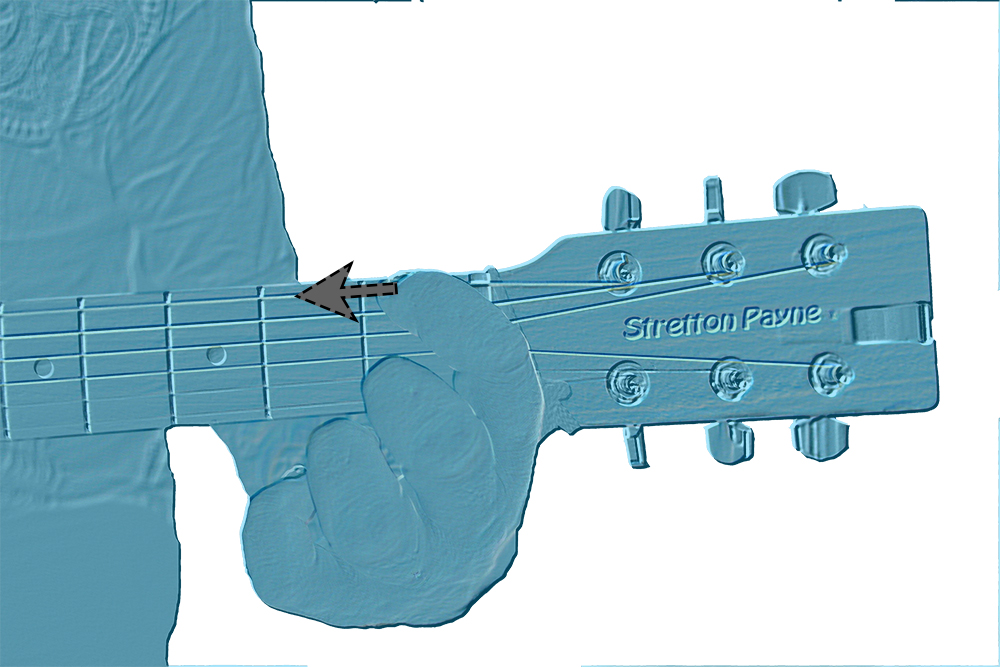Part 1
Theory
The Chromatic Order
This is a music alphabet; to understand this we sometimes find it helps to think of the way a piano looks.
You have two shapes of key on a piano the long white ones that stretch all the way down and the shorter black keys. The first thing you notice is that there’s not a short key in-between every long key.
The long keys are natural notes and the short keys are sharps or flats, in-between notes if you like.
The chromatic order runs
A Asharp B C Csharp D Dsharp E F Fsharp G Gsharp then back to A and just keeps going round this cycle getting higher in pitch. The sign in music for a sharp is #.

So that’s all the information you need to find every note on the guitar.
Putting It In To Practice

You already know that the bottom string (the thickest) produces the note of E. Apply pressure with your fretting hand, your left if you’re right handed; start with your index finger. Press down the 1st fret of the guitar; go for the wood part equal distance between the fret wire of each fret (refer to the picture for a bit of help with this).
Striking the E sting now will produce the note of F, as you are holding down the 1st fret and the note after E in the chromatic order is F. Move your finger a fret higher and it will now make the sound of F# a fret higher again it will now sound G then G# then A and so on.
Basically if you start with an open E, go all the way through the chromatic order until you reach E again; you should now be on the 12th fret of the guitar. On Classical guitars the neck meets the body at the 12th fret and on modern guitars the 12th fret has a double dot marking on it. This should help so you don’t have to count to 12 each time!
The same principals apply to all the strings on the guitar. The next string A, when you strike the string unfretted it produces the pitch of A, you already have that knowledge. Finger on the 1st fret will give you A#, 2nd B, 3rd C 4th C#. Keep going with this; again when you get to the 12th fret you’ll be on the note you started with, in this case A.

It’s handy to have the 12 notes = 1 octave diagram when working this out. It’s insane how easy you’ll forget this simple order when moving your fingers on the guitar, so it’s always great to have something to glimpse at quickly. After a few weeks of playing, this order will become second nature. Always remember after G# you start again, many years of teaching has taught us that’s the easiest thing to forget.